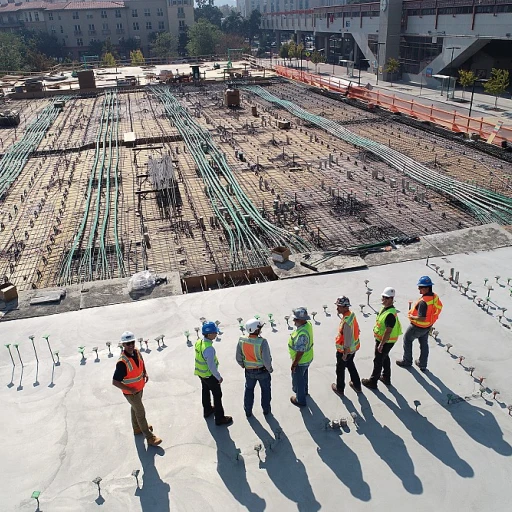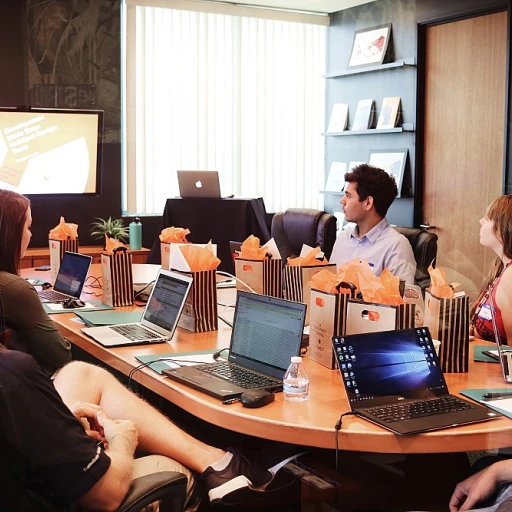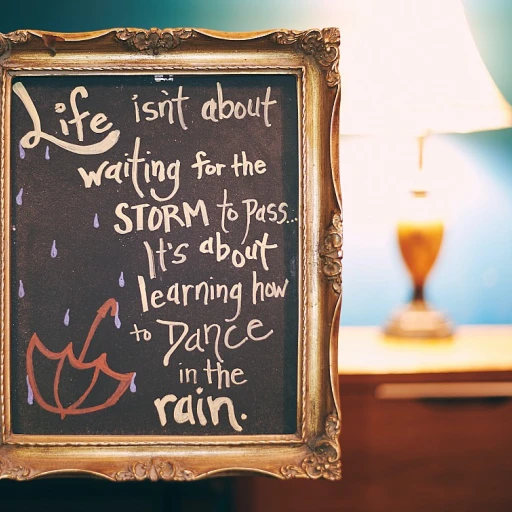The essence of 'immunity to change'
The Underlying Nature of Change Resistance
The concept of 'immunity to change' explains why we often set ambitious goals for improvement—whether in personal growth, professional development, or expanding our mental complexity—yet find ourselves falling short. This paradox is beautifully unpacked in the works of renowned authors who explore adult development and the barriers that prevent us from achieving our full potential. At the heart of this phenomenon lie our "competing commitments," which are often fueled by "big assumptions" embedded deep within our minds. These assumptions act like an immunity system, protecting us from perceived threats to our current self-concept and way of life. However, understanding and addressing these barriers is crucial for anyone who is committed to leadership development or who wishes to embrace continuous learning and foster personal growth. The process of identifying and overcoming these resistances requires a solid grasp of the change methodology, often outlined in influential books on change by leading psychologists. This literature can provide a blueprint for recognizing how our assumptions function like invisible mental handcuffs, preventing us from reaching the adaptive changes we desire. Reading inspirational works can broaden our perspective and encourage us to address these barriers methodically. An individual's willingness to delve into this self-discovery and embrace change is where personal and leadership development truly begins. Understanding that this immunity can be both a barrier and a catalyst is key to embarking on a fulfilling journey of improvement. If you’re keen on deepening your understanding of continuous learning and its impact on life, consider exploring resources that discuss how embracing these practices can enhance your life through continuous learning. It is here that mindsets can shift and the process of unlocking potential gets firmly underway.Identifying personal barriers to change
Unveiling Personal Barriers
When embarking on the journey of personal growth, identifying personal barriers to change is a crucial step. These barriers often stem from what Robert Kegan and Lisa Lahey describe as 'immunity to change'. This concept, explored in their influential book, highlights how individuals unconsciously resist change despite their conscious desire for improvement. Understanding this resistance is vital for unlocking potential and achieving development goals.
Personal barriers can manifest in various forms, often rooted in deep-seated assumptions and competing commitments. These 'big assumptions' act as mental roadblocks, hindering progress. For example, a person might aspire to take on leadership roles but harbor a subconscious belief that they lack the necessary skills. This belief, or big assumption, creates an immunity to change that prevents them from pursuing opportunities for leadership development.
Recognizing these barriers requires introspection and a willingness to confront uncomfortable truths about oneself. It involves examining the assumptions that underpin our actions and the competing commitments that divert us from our goals. This process of self-discovery is a cornerstone of adult development and is essential for fostering a mindset conducive to continuous learning.
As you delve deeper into this process, consider exploring new avenues for lifelong learning, which can provide fresh perspectives and strategies to overcome these barriers. Embracing a growth mindset is not just about acquiring new knowledge; it's about challenging the assumptions that limit our potential and embracing the adaptive changes necessary for personal and professional growth.
Strategies for overcoming resistance
Unlocking New Avenues for Growth
Understanding and overcoming resistance to change is a crucial aspect of personal growth and development. When individuals recognize their 'immunity to change,' they can begin to employ strategies that will effectively unlock their potential, aiding them in achieving their adaptive goals. Resistance to change may be complex, often tied to deeply ingrained beliefs or 'big assumptions.' These assumptions, sometimes hidden beneath the surface, can act as barriers to progress. To overcome them, it's essential to bring these big assumptions to the forefront of our consciousness and challenge their validity. Here's a simple yet effective approach to tackling resistance through strategic practices:- Identify Competing Commitments: These are unconscious commitments that work against the goal you're consciously trying to achieve. By acknowledging these competing commitments, individuals can start to alter their behavioral patterns and shift towards desired outcomes.
- Challenge Big Assumptions: Big assumptions can hold great power over your mind, limiting the capacity for change. Questioning these assumptions helps reduce their hold and opens up avenues for new ways of thinking.
- Engage in Reflective Practices: Reflective practices, like journaling or seeking feedback, play a significant role in personal and leadership development. It helps in identifying patterns of resistance and provides clarity on how to navigate them, thus fostering growth.
- Conscious Process Development: Developing a conscious process that focuses on creating small, incremental improvements can lead to significant transformation over time.
The role of mindset in continuous learning
The Influence of Mindset on Continuous Learning
In the realm of continuous learning, mindset plays a pivotal role in how individuals perceive and tackle change. The concept of 'immunity to change,' as discussed by authors like Robert Kegan and Lisa Lahey, emphasizes the internal barriers that often hinder personal development. This resistance is not just about external obstacles but deeply rooted mental frameworks that influence how people approach learning and growth.
To effectively engage in continuous learning, it's crucial to understand the mindset that underpins our reactions to change. A fixed mindset can often lead to resistance, as it implies that abilities and intelligence are static. Conversely, a growth mindset fosters the belief that skills and understanding can be developed through effort and perseverance. This perspective is essential for overcoming the 'immunity to change' that Kegan and Lahey describe in their work.
Developing an adaptive mindset involves recognizing and challenging the 'big assumptions' that limit our potential. These assumptions often manifest as competing commitments that hold us back from achieving our improvement goals. By identifying and addressing these mental complexities, individuals can unlock their potential and facilitate personal growth.
Leadership development and adult development theories highlight the importance of mindset in navigating the change process. Leaders who cultivate a growth mindset not only enhance their own learning but also inspire others to embrace change. This is particularly relevant in professional settings where leadership and learning go hand in hand.
Ultimately, the journey of continuous learning is a process that requires a shift in mindset. By acknowledging the influence of our mental frameworks, we can better navigate the challenges of change and foster a culture of lifelong learning. This approach not only aids personal development but also contributes to a more dynamic and resilient life.
Practical exercises for breaking through learning barriers
Breaking Through Learning Barriers with Practical Exercises
For individuals determined to enhance their continuous learning journey, practical exercises can be significant. Discovering one's immunity to change is a pivotal step in this process. It's not just about reading a book or engaging in leadership development sessions, but actively applying strategies to overcome resistance. Consider trying these exercises to effectively unlock potential and move past barriers:- Reflective Journaling: Taking time to write about challenges and the mental complexity surrounding them can shed light on your competing commitments. This practice makes it easier to understand the big assumptions you're operating under and how they impact your growth.
- Create Small Goals: Break down your improvement goal into smaller, more manageable steps. This will make the change process feel less daunting and more achievable.
- Experience Sharing Sessions: Join a group or community where you can share your journey with others. Sharing real-life examples offers a valuable perspective and encourages collective problem-solving.
- Mindfulness Meditation: Implement techniques that help focus the mind and encourage adaptive flexibility. This kind of mental pause can keep assumptions from gaining too much power and influence over your actions.
Case studies and real-life examples
Examples of Overcoming 'Immunity to Change' in Real-Life Contexts
To better grasp the concept of 'immunity to change' and see how it can be tackled, examining real-life examples can provide valuable insights. These case studies depict how individuals have successfully broken free from their personal barriers and embraced personal growth and development.
Case 1: The Journey of Leadership Development
A manager in a fast-paced corporate environment struggled with delegating tasks. Despite having an improvement goal of empowering his team, he was ensnared by his big assumptions that delegation could compromise his leadership. By exploring these assumptions and applying strategies articulated by Kegan and Lahey, he gradually embraced a mindset of trust, enhancing his team’s productivity through adaptive leadership.
Case 2: Unlocking Potential in Personal Life
An individual pursuing higher education felt impeded by an underlying fear of failure, impacting their academic journey. With a structured approach that included identifying competing commitments and confronting his mental complexities, he managed to overcome resistance. This process was pivotal in re-engineering his learning strategies and achieving his big goals.
Case 3: Overcoming Resistance to Change Through Adult Development
In one corporate case study, employees were resistant to a large-scale organizational change due to their existing assumptions and fear of instability. Utilizing elements of Robert Kegan’s change book, the organization focused on addressing these underlying assumptions through deliberate leadership development initiatives. This process effectively decreased resistance, transforming the work environment and fostering a more cooperative atmosphere.
These examples reinforce the significance of understanding the change process, which can facilitate meaningful transformations in both personal and professional domains. By acknowledging and addressing the underlying psychological and emotional factors, individuals and organizations can begin to eliminate immunity to change, setting the stage for long-term growth and continuous improvement.












